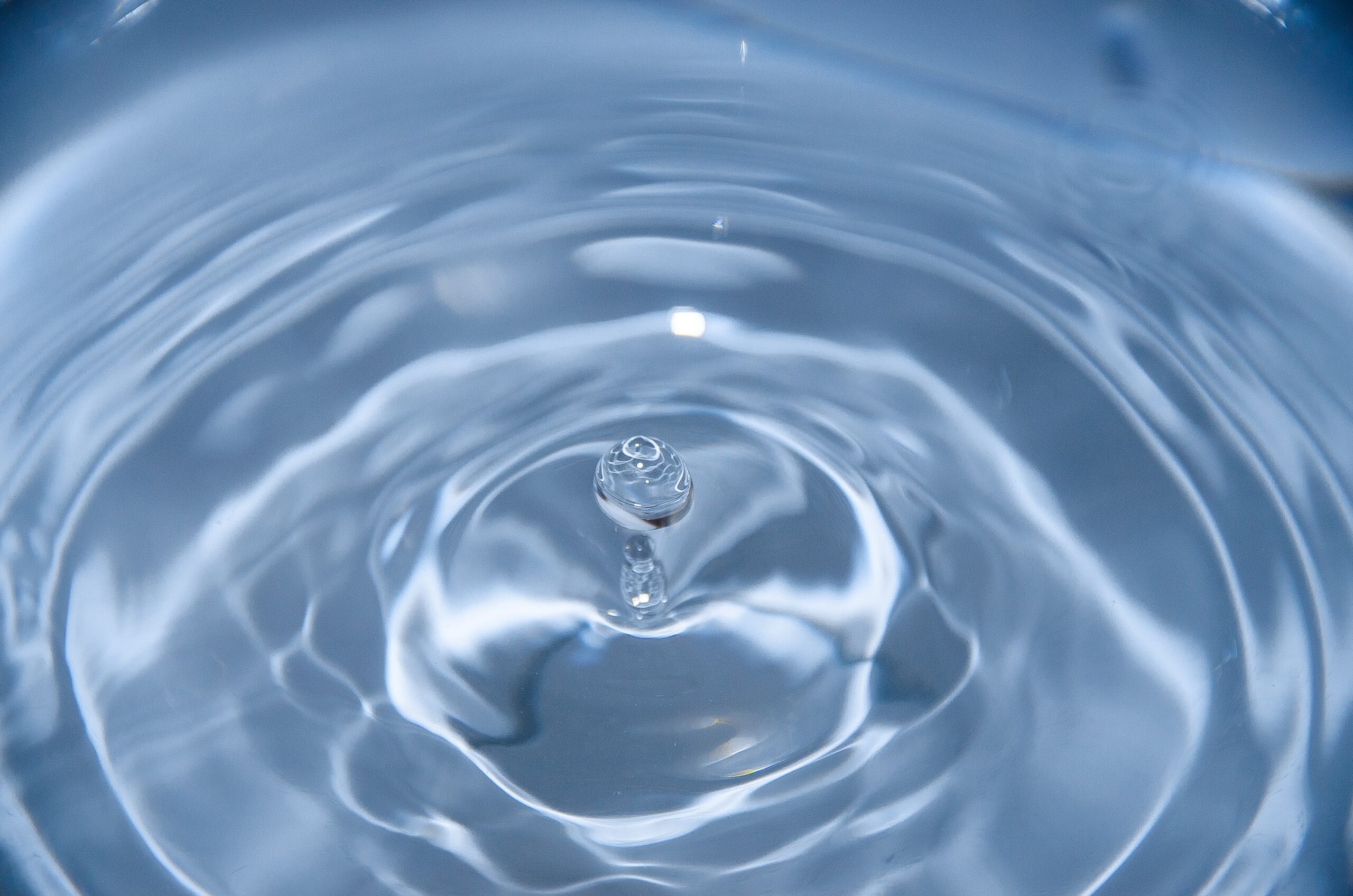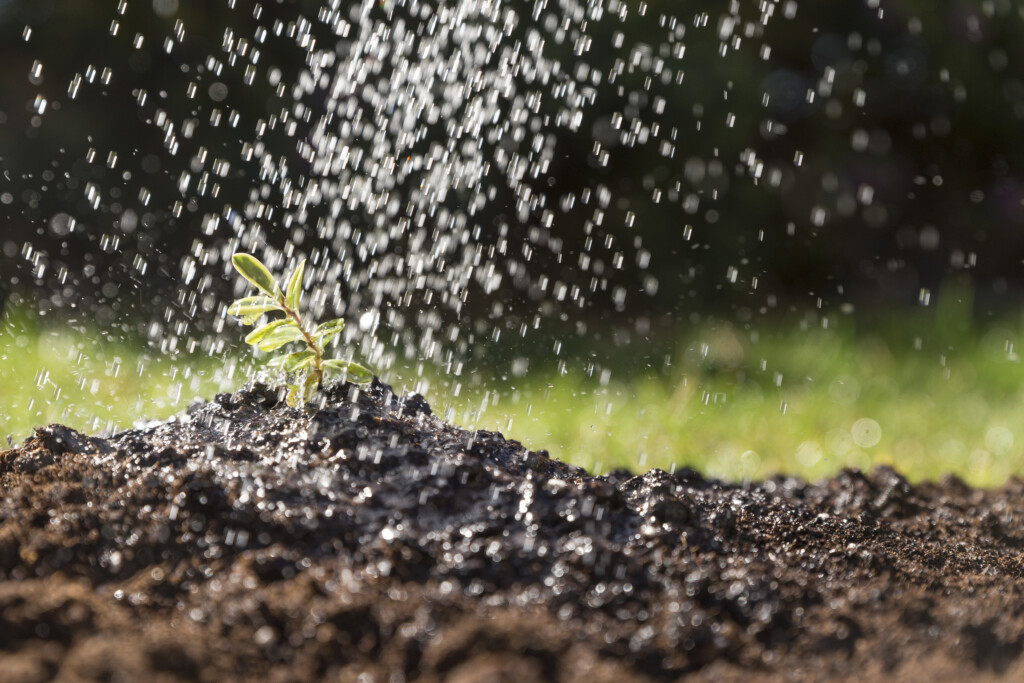Future of Solar, Solar Energy, Solar Technology

In a world increasingly dependent on sustainable and green energy, solar power has taken center stage. Solar energy, typically synonymous with powering homes or electric vehicles, hides another powerful capability in its arsenal — water purification. Water covers three-fourths of the Earth’s surface but not all of it is safe to drink. While many of us in urban and even rural areas have easy access to purified water, for billions living in remote areas, purified water remains a luxury. Current purification methods rely on electricity, which poses a significant barrier for communities that are off the grid. However, there is hope on the horizon. Let’s explore the revolutionary idea of using solar power for water purification, a solution that could reshape the landscape of clean water accessibility around the globe.
We all know that water is a fundamental resource — it’s vital for sustaining life, supporting socio-economic development, and maintaining healthy ecosystems. But the global water crisis is a real thing, and it poses an urgent and alarming challenge, affecting billions of people worldwide. According to the World Health Organization, approximately 2 billion people lack access to safely managed drinking water services. Additionally, nearly half of the world’s population, a staggering 3.6 billion people, lack access to proper sanitation facilities, resulting in unsafe human waste disposal.
These numbers emphasize the devastating impact of inadequate water and sanitation services on communities and individuals. Insufficient access to basic water, sanitation, and hygiene services deprives millions of fundamental necessities such as clean water and soap for handwashing. Because of this, preventable diseases and illnesses become widespread, causing the loss of 1.4 million lives annually, with a significant proportion being children. It’s not just about health, though. When there aren’t enough water and sanitation systems in place, it messes up education and the economy in communities. Inadequate water resources can force entire communities to relocate in search of water, exacerbating social and economic inequalities.
Agriculture is a big part of the problem too. It uses up 70% of all the freshwater in the world. According to the Food and Agriculture Organization (FAO), by 2050, a projected 60% increase in food production will be necessary to meet the demands of a growing population. This surge in food production will lead to increased water demand. However, it is crucial to improve irrigation practices, enhance crop yields, and limit the increase in water withdrawals to just 10% to ensure sustainable water use. Amidst these challenges, solar power emerges as a promising solution to address the global water crisis.

Several innovative methods have emerged that harness the power of solar energy for both water purification and irrigation. These groundbreaking approaches address the scarcity of clean drinking water and offer potential solutions for sustainable irrigation in water-deficient regions. Let’s explore these methods and the innovative technologies associated with each, revolutionizing access to clean water for drinking and supporting agricultural sustainability.
Solar distillation is one of the most common methods, which mimics the natural water cycle, where sunlight heats water to the point of evaporation. The water vapor then cools and condenses to form pure water, leaving behind contaminants. The key aspect of solar distillation is that it involves the phase changes of water — from liquid to vapor and back to liquid. While traditional distillation requires considerable energy, harnessing solar power makes this process sustainable and cost-effective.
An example of the method of solar distillation can be found through the use of solar stills. A solar still is a simple, portable, and easy-to-use device that uses solar energy to purify water. The design of a solar still is often based on a double-chambered structure. The outer chamber is filled with water, while the inner chamber is designed to convert sunlight into heat. When the solar still is exposed to sunlight, the inner chamber heats up, causing the water in the outer chamber to evaporate. This steam is then cooled and condensed, usually on the inner surface of the still, and collected as distilled water, leaving contaminants behind. The design of a solar still is efficient and doesn’t require additional filters or chemicals, making it an effective solution for water purification in various contexts. For instance, a nomadic tribe with limited access to clean water could use a solar still to purify water from a nearby stream or pond. Simply filled and exposed to sunlight, the device would convert the water to steam and then condense it back into drinkable water directly in the still. This practical, portable solution could significantly improve their access to clean water.
Researchers from King Abdullah University of Science and Technology in Saudi Arabia have developed a groundbreaking device that combines solar energy generation with water purification. By harnessing waste heat from a solar cell, the device purifies saline or contaminated water through evaporation and condensation. The purified water can be used for various purposes such as irrigation, desert agriculture, or cleaning solar panels. The compact design of the device makes it suitable for both industrial and backyard applications. While further advancements and cost reductions are needed, this device represents a significant step towards addressing water scarcity and energy demands simultaneously, offering hope for a brighter future. They reveal how the device works in a research paper published on Nature Communications.
Another revolutionary technique involves the use of photocatalysts — aka substances that speed up chemical reactions when activated by light. When exposed to sunlight, these photocatalysts can break down harmful pollutants in water, rendering it safe for consumption.
The solar absorber gel, developed by Princeton University Concept, is an example of this innovative approach. The gel is made up of a hydrogel (a network of polymer chains known for their high water absorbency), which also contains polypyrrole, a substance that absorbs sunlight. Upon solar irradiation, the gel heats up and vaporizes the water around it, leaving contaminants behind. The vapor then condenses into purified water.
For example, imagine a small community that relies on a river for its water supply. The river water, though abundant, is contaminated with heavy metals, microplastics, and bacteria. This community could use the solar absorber gel to purify their water. They simply need to submerge the gel in the contaminated water and expose it to sunlight. The gel absorbs the water, leaving behind contaminants. After absorbing sunlight, the gel heats up and the water evaporates. The steam is then condensed into clean water and collected in a separate container.
These work similarly to traditional filtration systems, but instead of relying on grid electricity, they run on solar power. Solar-powered filtration systems often include stages of sedimentation, filtration, and disinfection, providing comprehensive treatment of contaminated water. One of the methods that could be employed in these stages is reverse osmosis. Reverse osmosis is a process where water is forced under pressure through a semi-permeable membrane. This membrane filters out a variety of contaminants, effectively purifying the water. In the context of a solar-powered filtration system, the energy required to generate this pressure can be supplied by solar power, making the process more sustainable and adaptable to off-grid situations.
A solar-powered water treatment plant utilizes solar panels to capture sunlight and convert it into electricity. This renewable energy powers the entire water treatment process, which includes water intake and pre-treatment, filtration to remove contaminants, disinfection to eliminate microorganisms, post-treatment adjustments, and monitoring of water quality. The treated water is then stored and distributed for use. This solution is particularly valuable in remote rural communities lacking centralized water treatment infrastructure, providing them with access to safe and clean drinking water. One example of where a solar-powered water treatment plant could be employed is in a remote rural community located far away from centralized water treatment infrastructure. Such a community might rely on untreated water sources like rivers or wells, which could be contaminated with various pollutants and microorganisms.
The concept of Solar Water ATMs is a solution brought by Solar Water Solutions (SWS), a Finnish water technology company. The innovation lies in creating a fully solar-powered desalination system that doesn’t need computer systems or heavy batteries to operate. This system can provide clean water even in the remotest locations using 100% solar energy and with zero emissions. These ATMs are unmanned and allow locals to vend water using simple mobile payments, substantially lowering the barriers and costs of accessing clean drinking water. In Kenya’s drought-stricken region of Kitui County, SWS and its local partners installed a Solar Water ATM in February 2020. Locals can now access World Health Organization standard drinking water at a cost of $0.1 per 20-liter jerry can. Two LORENTZ smartTAP Water Dispensers integrated into the containerized SolarRO desalination system provide an easy, secure, and affordable solution for dispensing water. The system reduces the price and environmental footprint per water liter, remarkably lower than single-use plastic bottles from local kiosks.
Solar desalination is an innovative method that uses solar power for water purification by removing salt and impurities from seawater, providing a solution to water scarcity in coastal areas. Desalination plants globally, including those in Saudi Arabia, the United Arab Emirates, and Israel, treat seawater and wastewater to deliver clean drinking water to millions. However, improving energy efficiency in these plants has become a priority due to their high power consumption. Solar desalination offers a sustainable approach to address water scarcity while reducing energy demands.
Researchers at MIT and Shanghai Jiao Tong University in China have developed a cost-effective and efficient solar desalination system that can address water scarcity issues. Unlike previous methods, this system avoids salt accumulation, making it more durable and affordable. The device consists of a layered structure, with a dark top layer to absorb solar heat, a thin layer of water above a perforated material, and a reservoir of salty water below. The system utilizes natural convection to draw salt from the upper layer down into the larger reservoir, resulting in clean water. The team’s findings have potential applications in treating contaminated wastewater, generating steam for sterilization, and providing safe drinking water in off-grid or disaster-stricken areas. With further development and scaling, this innovative solution holds promise for addressing water shortages worldwide.
Solar thermal pasteurization is a method that uses heat from the sun to kill bacteria and pathogens in the water, making it safe for drinking. It works on the principle of pasteurization, which involves heating water to a certain temperature to kill harmful microorganisms. However, instead of using traditional heat sources, this process uses solar energy.
Solar water pasteurizers use solar collectors to capture and convert sunlight into heat, which is then transferred to the water. The heat raises the water’s temperature to the pasteurization point (about 70°C or 160°F), effectively killing harmful microorganisms. After the water reaches the required temperature, it is then cooled and ready for consumption. For example, in a remote mountainous region, where access to clean water and energy is limited, a community could use a solar water pasteurizer to purify their water. The device would be placed in a sunny location, filled with water from a local source, and left to heat up. After the water has been pasteurized, it can be safely consumed, improving the health and wellbeing of the community. Solar Cookers International (SCI), a non-profit organization, has conducted extensive research and development in the area of solar water pasteurization. Their solar cookers, while primarily designed for cooking, can also effectively pasteurize water, providing a dual solution for communities in need.
Solar Water Disinfection, commonly known as the SODIS method, harnesses the power of the sun to purify water, using a combination of heat and ultraviolet (UV) radiation. Here’s how it works: first, clear plastic or glass containers are filled with water from any source, such as a river, well, or rainwater catchment. These containers are then placed in direct sunlight for at least 6 hours, or up to 2 days if the sky is overcast. Sunlight serves a dual purpose in this process. The UV-A rays in sunlight destroy pathogens by damaging their DNA, rendering them harmless. Concurrently, the heat from the sunlight also contributes to the inactivation of pathogens, particularly when the water temperature rises above 50°C/122°F.
Let’s imagine a rural community living near a murky river, their only accessible water source. This community could adopt the SODIS method to purify their water supply. They’d just need to fill clear plastic or glass bottles with river water and leave them out in the sun. After the required exposure time, the treated water becomes safe to drink. The beauty of the SODIS method lies in its simplicity and affordability. It requires no complex equipment or expensive materials, making it a practical choice for resource-limited settings.
While solar-powered water purification offers numerous benefits, it’s crucial to acknowledge its limitations, including its dependence on weather conditions and the initial setup costs. Despite these constraints, the compelling benefits of solar-powered water purification methods shine through. Solar energy provides a renewable and widely available resource that can power purification systems, offering unique advantages in regions where traditional centralized treatment plants face limitations. These advantages include:
Although solar-powered water purification has many benefits, it also presents certain challenges. To gain a balanced perspective, let’s delve into some of the disadvantages associated with this method:
Despite these considerations, solar-powered water purification remains a promising and sustainable solution to address water scarcity and enhance clean water accessibility, particularly in regions where traditional centralized systems face challenges. By leveraging solar energy, innovative technologies continue to advance, aiming to mitigate the limitations associated with solar-powered purification and maximize its benefits in diverse contexts.
The potential impact of solar-powered water purification extends beyond clean water access in off-grid communities and disaster-stricken areas. These innovative techniques can also play a crucial role in securing agricultural production and promoting self-sufficiency in regions facing water deficits. By implementing solar desalination units, local communities can ensure efficient soil irrigation with fresh water from unsafe local resources, supporting agricultural production, creating employment opportunities, and fostering sustainable income.

The Food and Agriculture Organization of the United Nations (FAO) predicts a 50% increase in water requirements for agriculture by 2050 to meet the growing food demands of populations. However, water scarcity and declining water quality pose significant threats to global food security. Solar desalination, for example, offers a short and long-term solution, complementing other approaches tailored to specific local contexts. It provides a perennial, environmentally friendly, and cost-effective means of accessing clean water resources. Solar desalination systems can treat seawater, brackish water, and contaminated water, delivering immediate results for populations without alternative water sources. By integrating agrivoltaics and solar-powered water purification into agricultural initiatives, communities can enhance their resilience and overcome the challenges of water scarcity, ensuring a sustainable future for food production and population well-being.
While the integration of solar power for water purification is still in its early stages, it holds immense promise. Water purification today involves employing various methods, depending on the specific contaminants and the scale of operation. These methods include screening, where large debris is removed, coagulation and flocculation to clump particles together, sedimentation to allow particles to settle, filtration using sand, gravel, and charcoal to remove smaller impurities, disinfection through the addition of chlorine or chloramine, and storage and distribution. While these traditional processes require infrastructure and maintenance, solar-powered water purification offers a complementary solution.
Solar energy can power purification systems that mimic multiple stages of the conventional process, such as solar distillation combining flocculation, sedimentation, and filtration. Additionally, solar-powered disinfection methods, like UV disinfection, provide effective and environmentally friendly alternatives. These innovations enhance water purification efforts, particularly in regions with limited access to traditional approaches. By capitalizing on the abundant energy of the sun, we have the opportunity to make clean water accessible to all, one drop at a time.
Yes, solar-powered water purification can be used for agricultural purposes. It can provide fresh water for irrigation, supporting agricultural production and food self-sufficiency in regions facing water scarcity. Solar desalination, in particular, can help convert seawater or brackish water into usable water for crop irrigation, enhancing agricultural sustainability.
While solar-powered water purification offers numerous benefits, it does have some limitations. It is dependent on the availability of sunlight, making it less effective in regions with low solar radiation or during cloudy days. Additionally, the initial setup costs and technical expertise required for implementing solar-powered systems can pose challenges, especially in areas with limited resources or expertise.
Stay a while and read more posts like this
In recent years, Europe has witnessed a remarkable surge in the adoption of solar panels, marking a pivotal shift towards renewable energy. Data from the...
Renewable Energy, Solar Energy, Solar Energy Basics, Solar Technology
“Unlock the Truth: Get the Facts on Solar Energy!” Introduction Solar energy is becoming increasingly popular as a renewable energy source, but there are...
Imagine a world where you’re able to cut your monthly energy expenditure substantially. A reality where your home isn’t reliant on finite,...